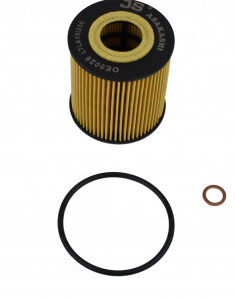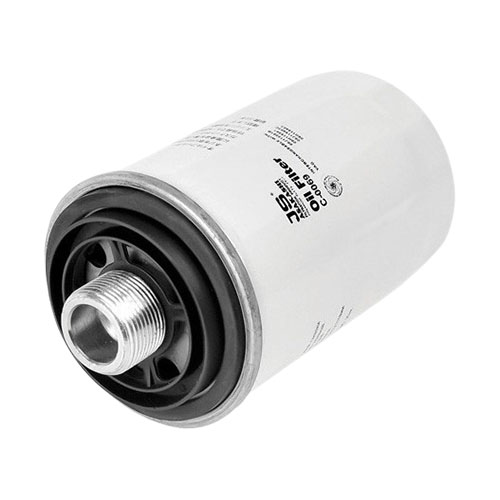-20%
Get AUDI & VW with TSI – TFSI Engines 1.8 – 2.0 Oil Filter Assy C0069 in Kenya
The oil filter assembly is one of the most crucial components in an internal combustion engine. It plays a key role in ensuring that the engine oil remains clean and free from contaminants, which helps maintain engine efficiency and longevity. The assembly consists of an oil filter, housing, gasket, and mounting components, all working together to filter out dirt, metal particles, and sludge that could damage engine components.
In this detailed guide, we will explore the oil filter assembly, including its function, types, benefits, failure signs, and maintenance tips to ensure optimal engine performance.
What is an Oil Filter Assembly?
An oil filter assembly is a complete unit designed to remove impurities from engine oil before it circulates through the engine’s moving parts. The assembly consists of:
- Oil Filter – The main filtration component that captures contaminants.
- Filter Housing – A protective casing that holds the oil filter.
- Gasket and O-Rings – Seals that prevent oil leaks.
- Bypass Valve – A safety feature that allows oil flow if the filter becomes clogged.
- Anti-Drain Back Valve – Prevents oil from draining back into the engine when it is turned off.
The oil filter assembly is typically located near the engine block and is connected to the lubrication system, where oil is continuously circulated through the engine.
How Does an Oil Filter Assembly Work?
The oil filter assembly operates by trapping contaminants from engine oil as it passes through the system. The process works as follows:
- Oil Intake – Oil is pumped from the oil pan into the oil filter assembly.
- Filtration – The oil passes through the filter media, where dirt, metal particles, and sludge are captured.
- Clean Oil Circulation – The purified oil is then delivered back to the engine through the lubrication system.
If the filter becomes too clogged, the bypass valve allows oil to continue flowing to prevent engine starvation, though this means unfiltered oil may circulate.
Types of Oil Filters
Different oil filters are designed to suit various engine types and driving conditions. Here are the most common types:
1. Full-Flow Oil Filters (Primary Filters)
- The most common type of oil filter.
- Filters all the engine oil before it circulates.
- Ensures that only clean oil reaches engine components.
2. Bypass Oil Filters (Secondary Filters)
- Used in addition to the full-flow filter.
- Filters a small percentage of oil at a time, but at a much finer level.
- Removes smaller contaminants for cleaner oil over time.
3. Cartridge Oil Filters
- Consists of a replaceable filter element without a metal casing.
- More environmentally friendly as only the filter media is changed.
4. Spin-On Oil Filters
- Features a metal canister with a built-in filter element.
- Entire unit is replaced during an oil change.
- Common in older vehicle models.
5. Magnetic Oil Filters
- Uses magnets to capture metallic particles.
- Helps remove microscopic metal shavings that traditional filters might miss.
Benefits of an Oil Filter Assembly
The oil filter assembly plays a crucial role in engine protection and performance. Some key benefits include:
1. Removes Contaminants
- Filters out dirt, metal shavings, carbon deposits, and sludge.
- Prevents engine wear and damage caused by dirty oil.
2. Prolongs Engine Life
- Clean oil reduces friction and heat buildup.
- Extends the lifespan of pistons, crankshafts, camshafts, and bearings.
3. Improves Fuel Efficiency
- Dirty oil increases engine resistance, reducing efficiency.
- A clean oil filter ensures smooth lubrication, reducing fuel consumption.
4. Prevents Oil Degradation
- Slows down oxidation and sludge formation, keeping oil cleaner for longer.
- Reduces the risk of premature oil breakdown.
5. Protects the Oil Pump
- Prevents debris from clogging the oil pump, ensuring proper lubrication.
6. Reduces Emissions
- Clean oil burns more efficiently, reducing harmful engine emissions.
- Helps maintain catalytic converter efficiency.
Signs of a Clogged or Failing Oil Filter
A dirty or clogged oil filter can cause serious engine problems. Watch out for these warning signs:
1. Low Oil Pressure Warning Light
- A blocked filter restricts oil flow, leading to low oil pressure.
- This can cause increased engine friction and overheating.
2. Dirty or Darkened Engine Oil
- If oil appears thick, dirty, or full of debris, the filter may not be working properly.
- A fresh amber or light brown color is ideal.
3. Engine Noise or Knocking Sounds
- Lack of lubrication can lead to metal-on-metal contact, causing unusual sounds.
4. Poor Engine Performance
- Sluggish acceleration, rough idling, or misfiring can indicate poor lubrication.
5. Increased Exhaust Smoke
- A clogged filter can cause oil to burn improperly, producing excessive smoke.
Oil Filter Assembly Maintenance Tips
To ensure your oil filter assembly functions efficiently, follow these maintenance tips:
1. Replace the Oil Filter Regularly
- Change the oil filter during every oil change (typically every 5,000 – 10,000 miles, depending on oil type and driving conditions).
- Follow your vehicle manufacturer’s recommendations.
2. Use the Right Filter Type
- Always use a filter that matches your vehicle specifications.
- Using the wrong filter can lead to oil leaks or poor filtration.
3. Check for Leaks
- After replacing the filter, inspect for oil leaks around the gasket.
- A loose or damaged gasket can cause oil loss.
4. Use High-Quality Engine Oil
- Premium synthetic oils reduce sludge buildup and extend filter life.
- Avoid contaminated or low-quality oils.
5. Inspect Oil Pressure Regularly
- Monitor oil pressure levels on the dashboard to detect issues early.
How to Replace an Oil Filter Assembly
Changing the oil filter is a straightforward process that can be done at home or by a professional.
Step-by-Step Guide:
-
Prepare the Vehicle
- Park on a level surface and allow the engine to cool.
- Gather necessary tools (oil filter wrench, drain pan, new filter, fresh oil).
-
Drain the Old Oil
- Place a drain pan under the oil pan and remove the drain plug.
- Let the old oil drain completely.
-
Remove the Old Oil Filter
- Use an oil filter wrench to loosen and remove the filter.
- Be careful, as it may contain residual oil.
-
Install the New Oil Filter
- Apply a thin layer of fresh oil to the new filter’s gasket to ensure a proper seal.
- Hand-tighten the new filter securely (do not overtighten).
-
Refill with New Oil
- Pour fresh oil into the engine and check the oil level with the dipstick.
-
Check for Leaks
- Start the engine and let it run for a few minutes.
- Inspect the area around the oil filter and drain plug for any leaks.
-
Dispose of Old Oil Properly
- Take used oil and the old filter to a recycling center.
Conclusion
The oil filter assembly is a vital part of any engine, ensuring that oil remains clean, free of debris, and capable of lubricating all critical components. Regular maintenance, timely oil filter replacement, and using high-quality engine oil will ensure long-lasting engine performance and reliability.
By taking care of your oil filter assembly, you protect your engine, improve fuel efficiency, and avoid costly repairs. 🚗💨
Follow us on Facebook for more parts.



